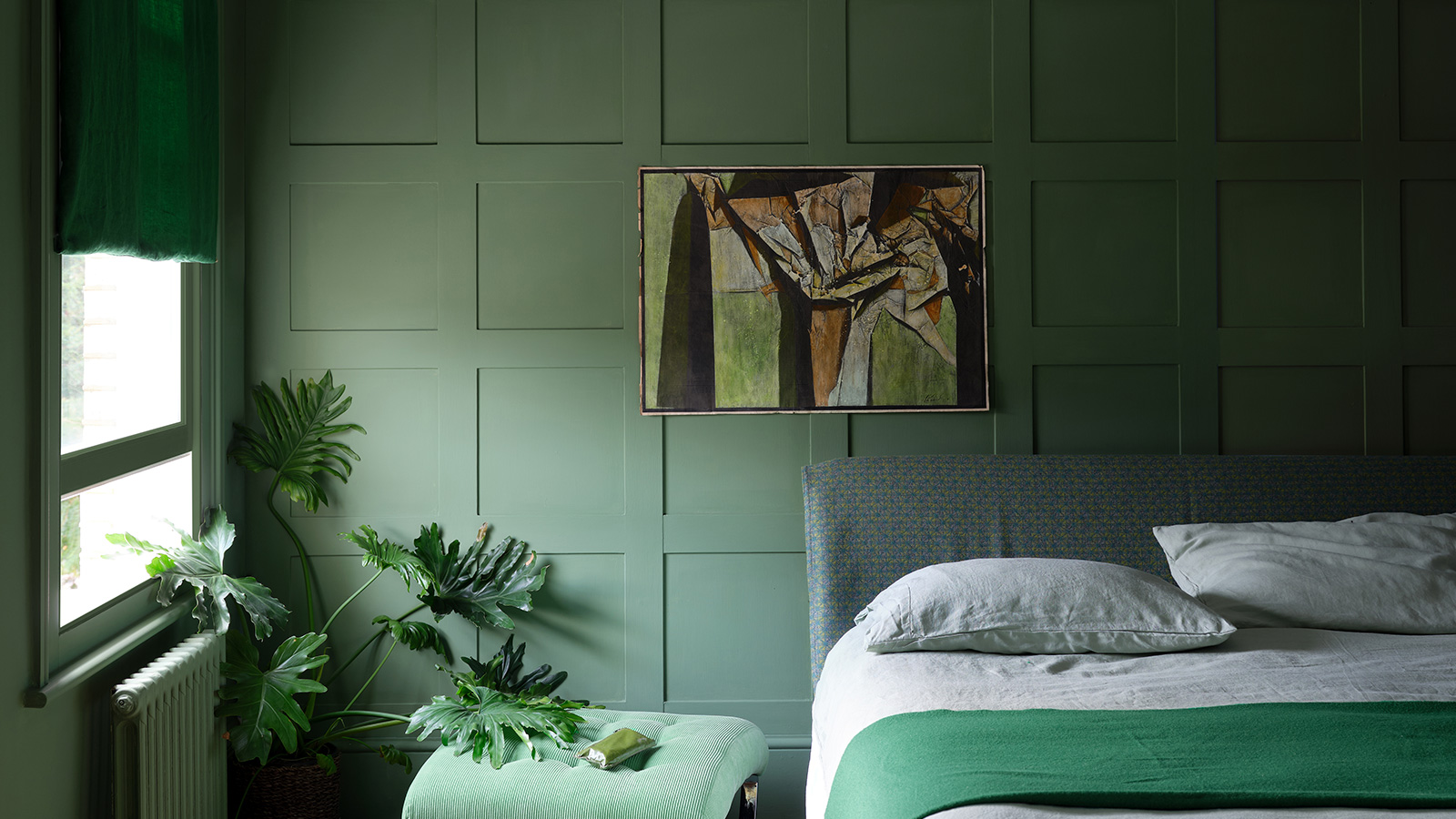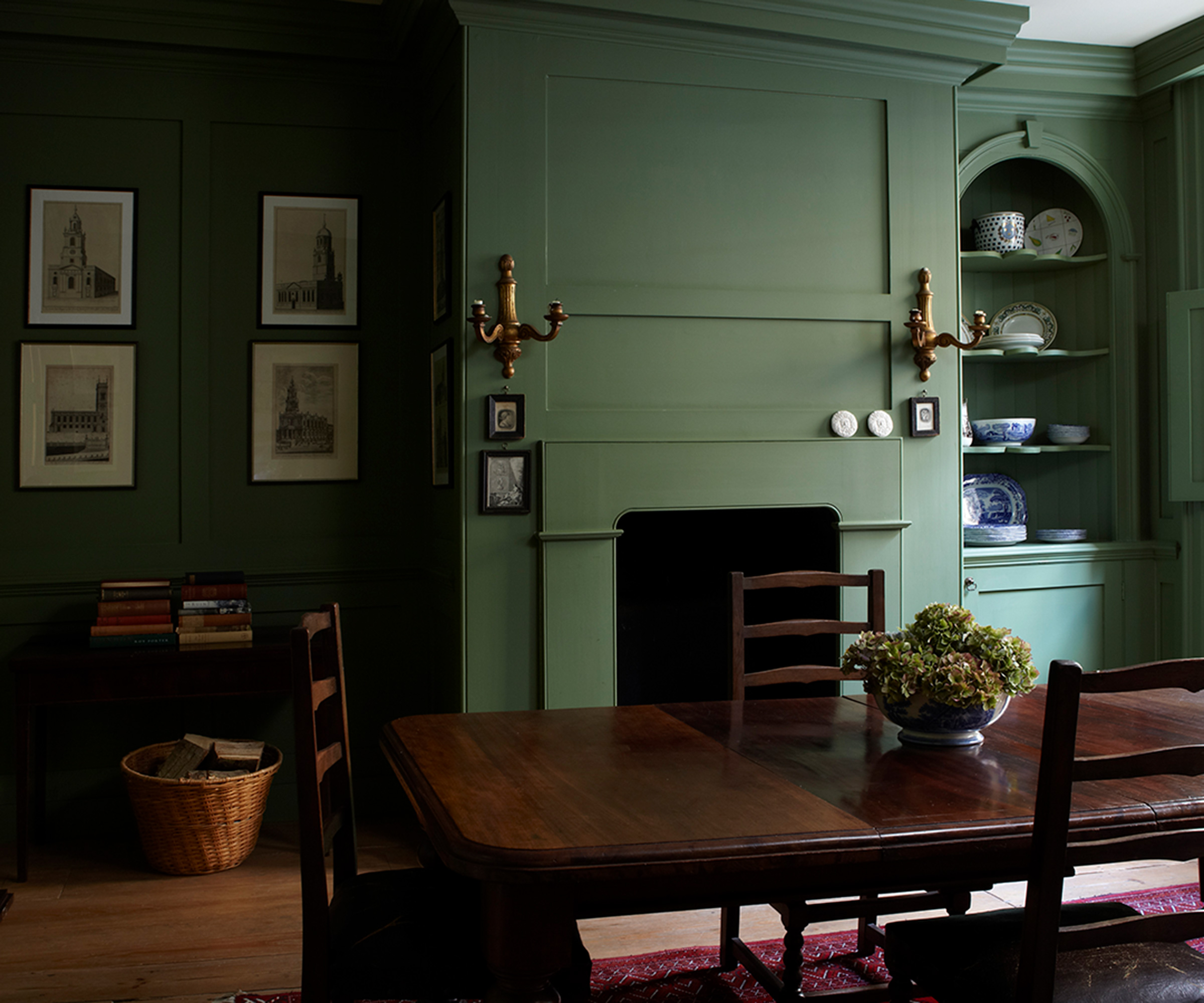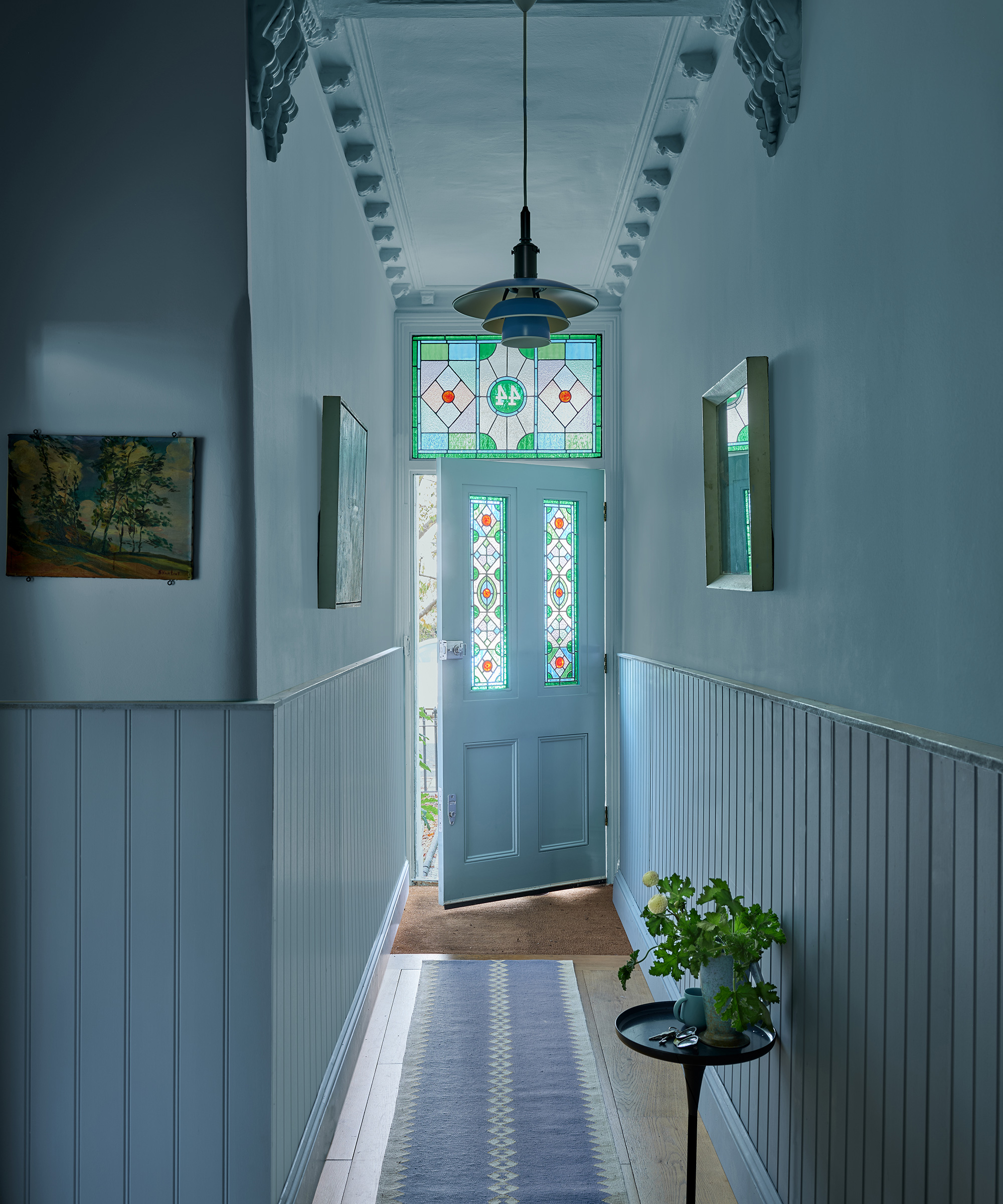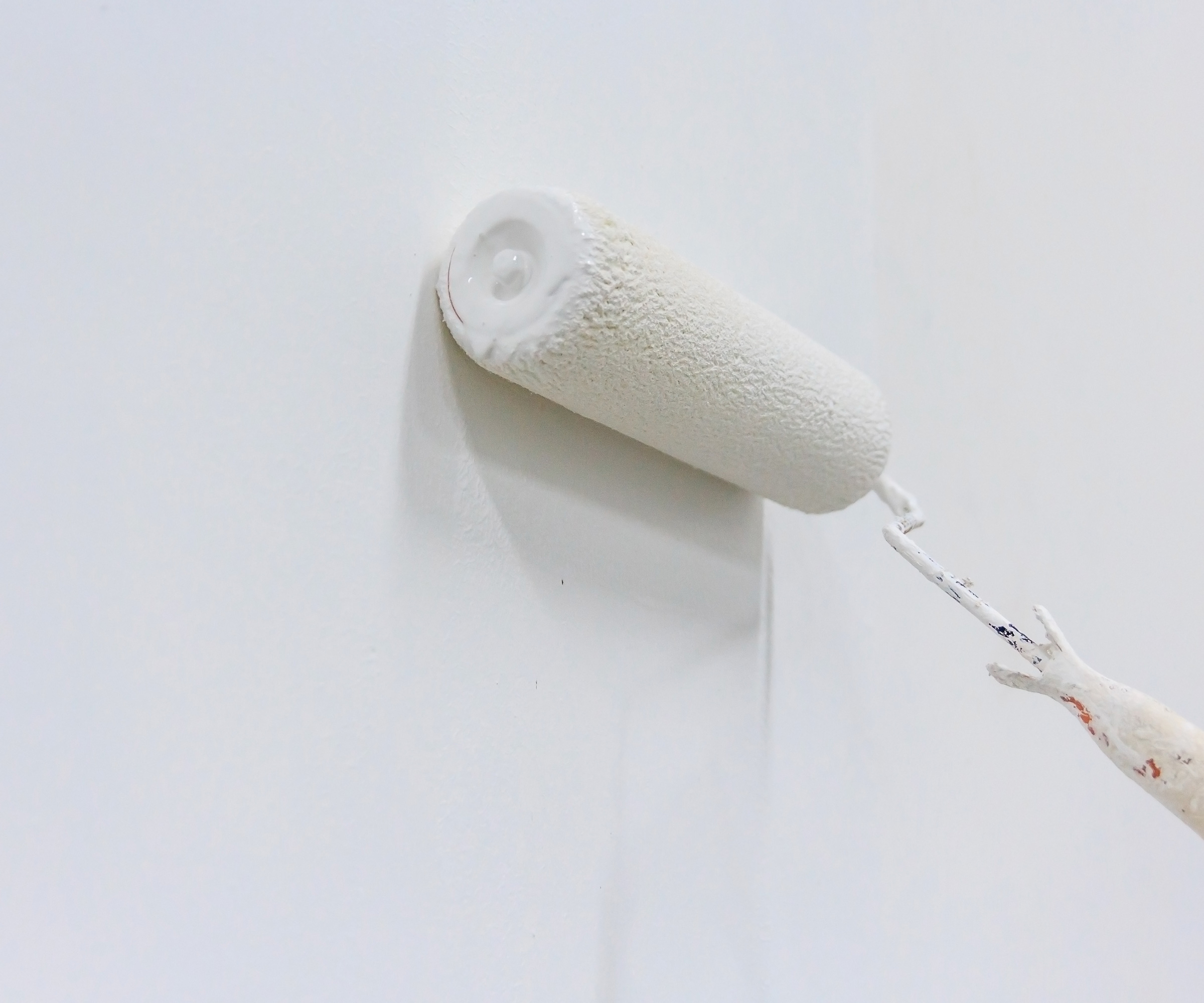What is emulsion paint used for and when should you avoid it? Our DIY experts have the answers
Not sure what emulsion paint can be used for? In this handy guide, we explain the best uses for this type of paint as well as the surfaces it might not be suitable for

Just what is emulsion paint used for? With so many different types of paint available, it can be hard to know which one is best for the particular project you are tackling.
"There are many different types of paint to choose from, but while some vary in their finish, others are defined by their ingredients or usage," explains DIY expert Steve Jenkins.
In this guide, we take a look specifically at emulsion paint, explaining what it is as well as how and where to use it. We'll also take a look at the different types of emulsion paint around – because for there to be just one type would be far too simple!
Read on to see whether emulsion paint is going to be the best finishing touch for the task you have in mind – and, if not, which alternatives might be better.
What is emulsion paint?
Emulsion is a water-based paint that is commonly available in two types: matt and silk.
Water-based paints are not quite as durable as oil-based paints, but tend to have quicker drying times and are easier to apply – handy for those painting a ceiling.
"You can choose from matt or silk finishes with matt offering a dull sheen that is a good choice for walls with imperfections as it doesn't reflect light, and makes imperfections harder to spot," says Steve. "A silk finish has a higher sheen so is more likely to show imperfections, but if you have smooth surfaces it is easier to keep clean."

Steve is has been a writer and editor for two decades. He is an avid DIYer with over 20 years of experience in transforming and renovating homes. He specialises in painting and decorating, but has strong all-round building skills, having previously worked in the industry for 10 years.

What is emulsion paint used for?
Emulsion paint is suitable for a number of different surfaces and uses, including painting wood.
"Emulsion paint tends to be best suited for walls for a beautiful, decorative finish, and will have a more flat, matt finish," advises Patrick O’Donnell, brand ambassador at Farrow & Ball. "Chalkier, matt emulsions absorb light, which means they are a great decorating tool to minimise the visibility of flaws on areas such as imperfect plasterwork."
"Emulsion is commonly used on walls and ceilings thanks to its make up and ease of use," explains Steve. "It can be used on wallpaper, bare plaster, plasterboard and Artex. If used on newly plastered walls, what is known as a 'mist cost' is needed to seal the plaster before adding any emulsion." Check out our tips on preparing walls for painting.
"Many of us are drawn to flat finishes for their innate subtlety and discretion – but as a rule they haven’t been the most durable finish for high traffic/busy households and rooms. The rule of thumb is, the higher the sheen, the tougher the finish," continues Patrick. "Matt emulsion with a slight sheen can be used in high-traffic spaces, including kitchens and bathrooms, as it’s specially formulated for moisture-prone areas."

As Brand Ambassador for Farrow & Ball, Patrick O’Donnell knows exactly how to bring a room to life. Patrick has been at Farrow & Ball since 2012. He’s always had a flair for interiors, with an ISVA Fine Art & Chattels qualification and having studied specialist paint decoration at the Leonard Pardon School.
Using emulsion on wood
If you're wondering if you can use emulsion on wood, the answer is yes. That said, it might not be the best choice, with other paint types being better suited to this surface. "A paint designed for wood would give a longer-lasting, more durable finish," explains Steve.
Internally, many wood finishes in homes tend to see a fair amount of wear and tear — for example skirting boards, architrave around doorways and wooden stair treads. For this reason, any paint you use on them needs to be really hardwearing. "Specialist hard-wearing emulsion is a good choice," advises Steve.
Try something like Crown Easyclean Matt Emulsion, available from Wickesor similar. These kinds of emulsion paints are formulated to allow for scrubbing and cleaning and are far more durable than standard matt emulsions.
"We have traditionally used emulsion for walls and ceilings and eggshell or gloss on wood trim," explains Patrick "However, with our new Dead Flat, apart from kitchens and bathrooms, you can use this 2% sheen on wood, metal and woodwork so you can create a seamless flow of colour in the same sheen level through a whole room for a fully immersive colour-drenching experience."

Is emulsion suitable for outdoors?
When it comes to finishing off the exterior elements of your home – tasks such as painting windows – or garden features, you need to be sure that the paint you use is suitable for the job.
Being water-based, emulsion is generally not a great choice for outdoors as it just isn't durable enough and doesn't offer much in the way of weatherproofing. You are far better off using a specialist exterior paint.
Should you use a roller or brush for emulsion?
When researching how to paint a room, it is useful to know that you can use either a brush or a roller to apply emulsion – although a combination of the two might be best.
"The key tools are a paint brush and roller to get the best finish," confirms Steve. "A two- or three-inch brush is ideal for cutting in at ceilings, corners, windows, doors and skirting boards.
"If you are not confident at cutting in, invest in a cutting brush like this Harris Seriously Good Walls & Ceilings Cutting In Angled Paint Brush from Amazon. The angled bristles make it easier to move the brush into edges and get a neat straight line.
"For walls and ceilings a 9-inch roller with a medium pile is the common choice," continues Steve. "This will eliminate brush strokes, but more importantly it will greatly reduce the time it takes to paint a wall or ceiling. Plus, it will give a more even finish and use less paint.
"To speed up the process further – and save getting up and down a ladder to reach tops of walls and ceilings – an extension pole is a smart investment."

FAQs
Is a synthetic or natural brush better for emulsion?
When buying paintbrushes you will be faced with two options: those with synthetic bristles and those with natural. But which is best for emulsion paint?
"As a general rule synthetic bristles are used for water-based paints such as emulsion, but they can also be used for other paints such as gloss, satin, eggshell etc," advises Steve Jenkins. "Unlike natural bristle paint brushes they don’t swell in water making it easier to apply, cut in and clean.
"Natural bristle brushes are typically used with oil-based paints, as often used by professional painters and decorators. They hold the paint well and disperse at an even rate, but need more control. They are harder to clean and maintain, needing a specialist brush cleaner or white spirit to get the job done."
Emulsion paint is a really versatile choice but it will really pay dividends to ensure you are choosing the right type for the project you have in mind.
If you want a washable, hardwearing paint (say for areas of high traffic such as hallways, or in the kitchen) then a satin finish will definitely be your best option. If, on the other hand, you have an uneven surface and want a paint that will help hide imperfections, lumps and bumps, then matt is going to be a better bet — plus those wondering how to paint a wall with a roller will find a matt paint more forgiving.
Find out what is vinyl matt paint to make sure you buy the best product for the job.
Get the Homebuilding & Renovating Newsletter
Bring your dream home to life with expert advice, how to guides and design inspiration. Sign up for our newsletter and get two free tickets to a Homebuilding & Renovating Show near you.
Natasha was Homebuilding & Renovating’s Associate Content Editor and was a member of the Homebuilding team for over two decades. In her role on Homebuilding & Renovating she imparted her knowledge on a wide range of renovation topics, from window condensation to renovating bathrooms, to removing walls and adding an extension. She continues to write for Homebuilding on these topics, and more. An experienced journalist and renovation expert, she also writes for a number of other homes titles, including Homes & Gardens and Ideal Homes. Over the years Natasha has renovated and carried out a side extension to a Victorian terrace. She is currently living in the rural Edwardian cottage she renovated and extended on a largely DIY basis, living on site for the duration of the project.

